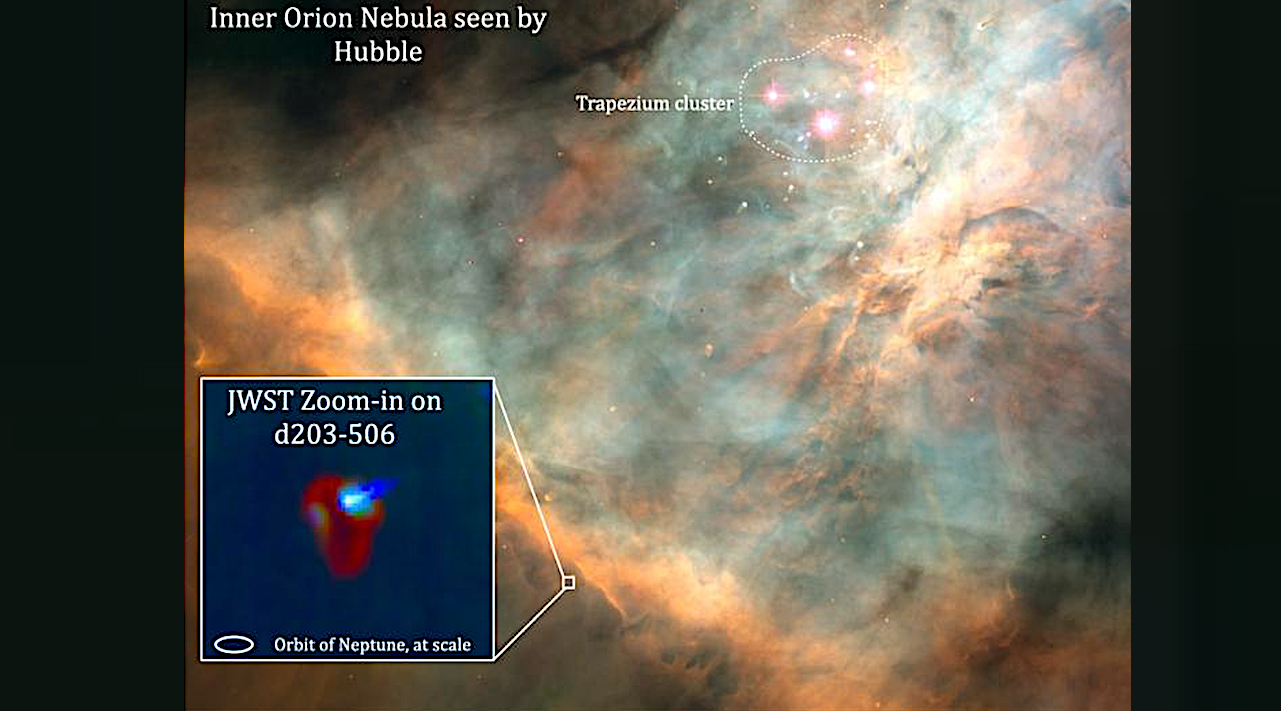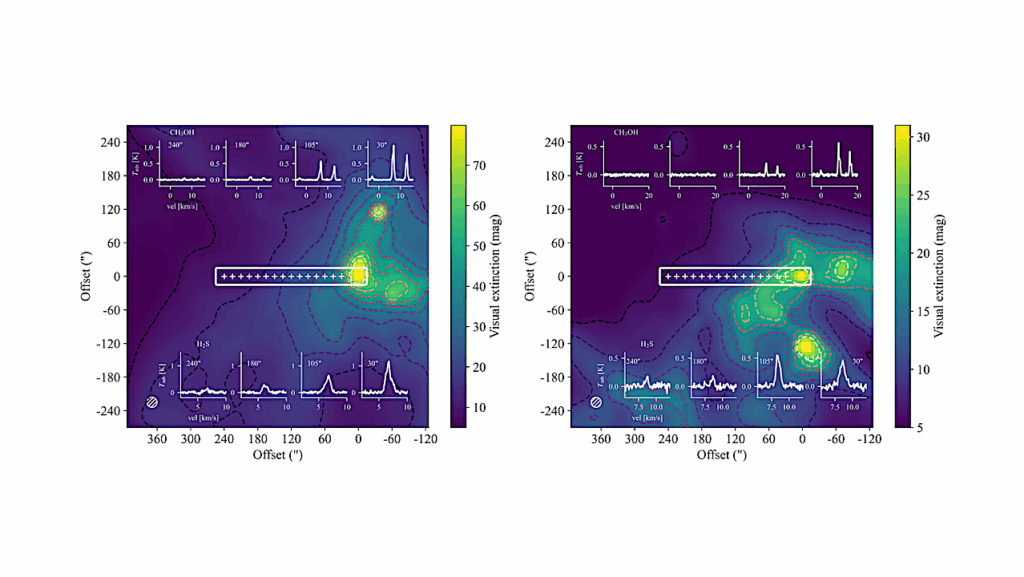Radiation From Massive Stars Shapes Planetary Systems

How do planetary systems such as the Solar System form? To find out, CNRS scientists taking part in an international research team studied a stellar nursery, the Orion Nebula, using the James Webb Space Telescope.
By observing a protoplanetary disc named d203-506, they have discovered the key role played by massive stars in the formation of such nascent planetary systems.
These stars, which are around 10 times more massive, and more importantly 100,000 times more luminous than the Sun, expose any planets forming in such systems nearby to very intense ultraviolet radiation. Depending on the mass of the star at the centre of the planetary system, this radiation can either help planets to form, or alternatively prevent them from doing so by dispersing their matter. In the Orion Nebula, the scientists found that, due to the intense irradiation from massive stars, a Jupiter-like planet would not be able to form in the planetary system d203-506.
This paper, which will make the front page of the journal Science on 1st March, 2024, shows with unprecedented precision the decisive role played by massive stars in shaping planetary systems, and opens up new perspectives on how such systems form.
A far-ultraviolet-driven photoevaporation flow observed in a protoplanetary disk, Science
Astrobiology,








